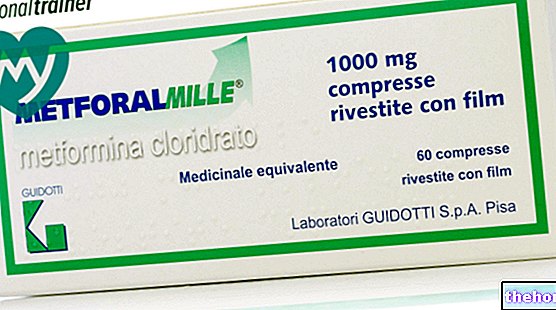Active ingredients: Cinnarizine
CINAZYN / CINAZYN FORTE 25 mg tablets, 75 mg / ml drops suspension, 75 mg capsules, 100 mg capsules
Why is Cinazyn used? What is it for?
PHARMACOTHERAPEUTIC CATEGORY
Antivertigo preparation and to improve cerebral circulation and peripheral circulation.
THERAPEUTIC INDICATIONS
Tablets
- Disorders of cerebral circulation, particularly from arteriosclerosis including tremors, ringing of the ears, mood disorders (irritability and asociality), memory loss and poor concentration.
- Disturbances in balance of central and peripheral origin including dizziness, tremors, ringing of the ears, nystagmus, nausea and vomiting.
- Adjuvant in the therapy of peripheral vasculopathies such as, for example, bluish extremities, intermittent claudication, varicose ulcers, paraesthesia (abnormal sensation, not painful such as burning, tingling, pricking, etc.), night cramps, cold extremities.
Drops
- Disorders of cerebral circulation, particularly from arteriosclerosis including tremors, ringing of the ears, mood disorders (irritability and asociality), memory loss and poor concentration.
- Disturbances in balance of central and peripheral origin including dizziness, tremors, ringing of the ears, nystagmus, nausea and vomiting.
- Therapy of peripheral vascular diseases such as, for example, bluish extremities, intermittent claudication, varicose ulcers, paraesthesia (abnormal sensation, not painful such as burning, tingling, stinging, etc.), nocturnal cramps, cold extremities.
Capsules
- Disorders of cerebral circulation, particularly from arteriosclerosis including tremors, ringing of the ears, mood disorders (irritability and asociality), memory loss and poor concentration.
- Therapy of peripheral vasculopathies such as, for example, bluish extremities, intermittent claudication, varicose ulcers, paraesthesia (abnormal sensation, not painful such as burning, tingling, stinging, etc.), nocturnal cramps, cold extremities.
Contraindications When Cinazyn should not be used
Known individual hypersensitivity to the drug. Acute stroke of the brain.
Precautions for use What you need to know before taking Cinazyn
Cinazyn could cause epigastric pain: (localized pain in the upper part of the stomach): taking it after meals may decrease this effect.
In patients with Parkinson's disease, Cinazyn should only be given if the therapeutic benefits outweigh the possible risk of aggravation of this disease.
Interactions Which drugs or foods can modify the effect of Cinazyn
Central nervous system depressants / tricyclic antidepressants: concomitant use could potentiate the sedative effects of these drugs or Cinazyn.
Diagnostic Interference: When used up to 4 days prior to a skin test, Cinazyn may inhibit positive reactions to skin reactivity indicators.
Alcohol: avoid the simultaneous intake of alcoholic beverages.
Warnings It is important to know that:
Cinazyn can cause drowsiness, especially at the beginning of treatment. Therefore particular caution is required during activities such as driving cars and operating dangerous machinery.
The pharmaceutical form of drops contains ethyl alcohol: for those who carry out sports activities, the use of medicines containing ethyl alcohol can determine a positive anti-doping test in relation to the alcohol concentration limits indicated by some sports federations.
The medicine is not contraindicated for people with celiac disease.
PREGNANCY AND BREASTFEEDING
It is not recommended to use Cinazyn in known or suspected pregnancy, although cinnarizine has not shown teratogenic effects in animal studies.
Since there are no data on the excretion of Cinazyn in breast milk, it is not recommended for use during lactation.
Dose, Method and Time of Administration How to use Cinazyn: Posology
Tablets: 1 - 2 tablets of 25 mg 3 times a day.
Drops: 1 ml = 25 drops = 75 mg of cinnarizine.
- Disorders of cerebral circulation: 8-15 drops (24- 45 mg) 3 times a day or 25 drops (75 mg) 2 times a day.
- Peripheral circulation disorders: 25 drops (75 mg) 2-3 times a day.
- Vestibular disorders: 8 drops (24 mg) 3 times a day or 12 drops (36 mg) 2 times a day.
- Movement sickness: 8 drops (24 mg) to be taken half an hour before starting the journey and to be repeated every 6 hours.
75 mg capsules:
- Disorders of cerebral circulation: 1 capsule 2 times a day.
- Peripheral circulation disorders: 1 capsule 2-3 times a day.
100 mg capsules:
- Disorders of cerebral circulation: 1 capsule 2 times a day.
- Peripheral circulation disorders: 1 capsule 2-3 times a day.
CINAZYN should preferably be taken after meals.
It is recommended not to exceed the recommended doses.
Since the effect of Cinazyn on vertigo is dose-dependent, the dosage should be gradually increased.
Maintenance therapy
Symptomatic improvement can come quickly. However, a maintenance treatment may be necessary in order to obtain long-lasting results. Being well tolerated, Cinazyn at therapeutic doses is also suitable for maintenance therapy. In the treatment of elderly patients, the posology must be carefully established by the doctor who will have to evaluate a possible reduction of the dosages indicated above.
Overdose What to do if you have taken too much Cinazyn
In a single case of acute overdose (2100 mg), in a 4-year-old child, vomiting, somnolence, coma, tremor, hypotonia (decreased muscle tone) were observed.
The recovery of the child took place without consequences.
There is no specific antidote to overdose, but gastric lavage and administration of activated charcoal may help.
Side Effects What are the side effects of Cinazyn
Somnolence and gastrointestinal disturbances may occur. These disturbances are generally transient and can be prevented by establishing the optimal dosage gradually. In rare cases, headaches, dry mouth, weight gain, sweating or allergic reactions may be observed.
In elderly patients, cases of aggravation or appearance of extrapyramidal phenomena, sometimes associated with feelings of depression, have been described during long-term treatments. In such cases the treatment should be stopped.
Report any observed side effects not yet described above to your doctor or pharmacist.
Expiry and Retention
Do not use the medicine after the expiry date indicated on the package.
Keep this medicine out of the reach of children.
Deadline "> Other information
COMPOSITION
Each divisible tablet of Cinazyn contains:
Active ingredient: cinnarizine 25 mg
Excipients: povidone, sucrose, lactose, pregelatinised maize starch, talc, hydrogenated vegetable oil.
Each ml of Cinazyn drops contains:
Active ingredient: cinnarizine 75 mg
Excipients: microcrystalline and carmellose cellulose, ethyl alcohol, polysorbate 20, methyl p-hydroxybenzoate, propyl p-hydroxybenzoate, banana flavor, sorbitol, distilled water.
Each capsule of Cinazyn Forte contains:
Active ingredient: cinnarizine 75 mg
Excipients: microcrystalline cellulose, talc, sodium stearate, precipitated silica, gelatin, titanium dioxide.
Each capsule of Cinazyn contains:
Active ingredient: cinnarizine 100 mg
Excipients: microcrystalline cellulose, talc, sodium stearate, precipitated silica, gelatin, titanium dioxide.
PHARMACEUTICAL FORMS AND PACKAGES
- 25 mg divisible tablets - 50 tablets
- 75 mg / ml drops suspension - Bottle of 30 ml
- 75 mg capsules (Cinazyn forte) - 20 capsules
- 75 mg capsules (Cinazyn forte) - 60 capsules
- 100 mg capsules - 50 capsules
Source Package Leaflet: AIFA (Italian Medicines Agency). Content published in January 2016. The information present may not be up-to-date.
To have access to the most up-to-date version, it is advisable to access the AIFA (Italian Medicines Agency) website. Disclaimer and useful information.
01.0 NAME OF THE MEDICINAL PRODUCT -
CHINAZYN
02.0 QUALITATIVE AND QUANTITATIVE COMPOSITION -
Each breakable tablet contains:
Cinnarizine 25 mg.
100 ml of suspension contain:
Cinnarizine 7.5 g.
Each "forte" 75 mg capsule contains:
Cinnarizine 75 mg.
Each 100 mg capsule contains:
Cinnarizine 100 mg.
03.0 PHARMACEUTICAL FORM -
- Divisible tablets
- Aqueous suspension
- Gelatinous capsules containing powder
04.0 CLINICAL INFORMATION -
04.1 Therapeutic indications -
Tablets
- Disorders of cerebral circulation, particularly from arteriosclerosis including tremors, ringing of the ears, mood disorders (irritability and asociality), memory loss and poor concentration.
- Alterations of balance, of central and peripheral origin including vertigo, tremors, ringing of the ears, nystagmus, nausea and vomiting.
- Adjuvant in the therapy of peripheral vasculopathies such as, for example, bluish extremities, intermittent claudication, varicose ulcers, paraesthesia (abnormal sensation, not painful such as burning, tingling, stinging, etc.), nocturnal cramps, cold extremities.
Drops
- Disorders of cerebral circulation, particularly from arteriosclerosis including tremors, ringing of the ears, mood disorders (irritability and asociality), memory loss and poor concentration.
- Alterations of balance, of central and peripheral origin including vertigo, tremors, ringing of the ears, nystagmus, nausea and vomiting.
- Therapy of peripheral vasculopathies such as, for example, bluish extremities, intermittent claudication, varicose ulcers, paraesthesia (abnormal sensation, not painful such as burning, tingling, stinging, etc.), nocturnal cramps, cold extremities.
Capsules
- Disorders of cerebral circulation, particularly from arteriosclerosis including tremors, ringing of the ears, mood disorders (irritability and asociality), memory loss and poor concentration.
- Therapy of peripheral vasculopathies such as, for example, bluish extremities, intermittent claudication, varicose ulcers, paraesthesia (abnormal sensation, not painful such as burning, tingling, stinging, etc.), night cramps, cold extremities.
04.2 Posology and method of administration -
Tablets: 1-2 tablets of 25 mg 3 times a day.
Drops: (1 ml = 25 drops = 75 mg cinnarizine.)
- Disorders of cerebral circulation: 8-15 drops (24 - 45 mg) 3 times a day or 25 drops (75 mg) 2 times a day.
- Peripheral circulation disorders: 25 drops (75 mg) 2-3 times a day.
- Vestibular disorders: 8 drops (24 mg) 3 times a day or 12 drops (36 mg) 2 times a day.
- Movement sickness: 8 drops (24 mg) to be taken half an hour before starting the journey and to be repeated every 6 hours.
75 mg capsules:
- Disorders of cerebral circulation: 1 capsule 2 times a day.
- Peripheral circulation disorders: 1 capsule 2-3 times a day.
100 mg capsules:
- Disorders of cerebral circulation: 1 capsule 2 times a day.
- Peripheral circulation disorders: 1 capsule 2-3 times a day.
CINAZYN should preferably be taken after meals.
It is recommended not to exceed the recommended doses. Since the effect of Cinazyn on vertigo is dose-dependent, the dosage should be gradually increased.
Maintenance therapy
Symptomatic improvement can come quickly. However, a maintenance treatment may be necessary in order to obtain long-lasting results. Being well tolerated at therapeutic doses, Cinazyn is also suitable for maintenance therapy. In the treatment of elderly patients, the posology must be carefully established by the doctor who will have to evaluate a possible reduction of the dosages indicated above.
04.3 Contraindications -
Known individual hypersensitivity to the drug.
Acute stroke of the brain.
04.4 Special warnings and appropriate precautions for use -
Cinazyn may cause drowsiness, especially at the start of treatment. Therefore particular caution should be exercised in concomitant use of alcoholic or CNS depressants.
Cinazyn may cause epigastric distress: taking it after meals may decrease this effect. In patients with Parkinson's disease Cinazyn should only be administered if the therapeutic benefits outweigh the possible risk of aggravation of this disease.
The medicine is not contraindicated for people with celiac disease.
The pharmaceutical form of drops contains ethyl alcohol: for those who carry out sports activities, the use of medicines containing ethyl alcohol can determine positive doping tests in relation to the alcohol concentration limits indicated by some sports federations
04.5 Interactions with other medicinal products and other forms of interaction -
Central Nervous System Depressants / Tricyclic Antidepressants: Concomitant use may potentiate the sedative effects of these drugs or Cinazyn.
Diagnostic Interference: When used up to 4 days prior to a skin test, Cinazyn, due to its antihistamine effect, may inhibit positive reactions to skin reactivity indicators.
Alcohol: avoid the simultaneous intake of alcoholic beverages.
04.6 Pregnancy and breastfeeding -
It is not recommended to use Cinazyn in known or suspected pregnancy. However, cinnarizine did not show teratogenic effects in animal studies.
Since there are no data on the excretion of Cinazyn in breast milk, it is not recommended for use during lactation.
04.7 Effects on ability to drive and use machines -
Since the product, especially in the initial phase of therapy, can cause drowsiness, caution should be adopted during potentially dangerous activities, such as driving cars and using machines.
04.8 Undesirable effects -
Somnolence and gastrointestinal disturbances may occur. These disturbances are generally transient and can be prevented by establishing the optimal dosage gradually. In rare cases, headaches, dry mouth, weight gain, sweating or allergic reactions may be observed.
Similarly, very rare cases of lichen planus and lupus-like symptoms have been reported. An isolated case of cholestatic jaundice has been published in the medical literature.
In elderly patients, cases of aggravation or appearance of extrapyramidal phenomena, sometimes associated with feelings of depression, have been described during long-term treatments. In such cases the treatment should be stopped.
04.9 Overdose -
In a single case of acute overdose (2100 mg), in a 4-year-old child, vomiting, somnolence, coma, tremor, hypotonia were observed. The child's recovery took place without consequences.
There is no specific antidote to overdose, but gastric lavage and administration of activated charcoal may help.
05.0 PHARMACOLOGICAL PROPERTIES -
05.1 "Pharmacodynamic properties -
Cinnarizine is a selective calcium channel blocker belonging to type IV calcium channel blockers according to the WHO classification.
Cinnarizine also has an antihistamine effect on H1 receptors.
Cinnarizine inhibits contractions of vascular smooth muscle cells by blocking calcium channels. In addition to this direct calcium antagonism, cinnarizine decreases the contractile activity of vasoactive substances such as norepinephrine and serotonin by blocking receptor-dependent calcium channels.
The blocking of calcium entry into the cell is tissue-selective and results in anti-vasoconstrictive properties with no effect on blood pressure and heart rate.
Cinnarizine can further improve insufficient microcirculation by increasing erythrocyte deformability and decreasing blood viscosity.
It also increases the cell's resistance to hypoxia. The drug inhibits stimulation of the vestibular system with suppression of nystagmus and other autonomic disorders. Acute vertigo episodes can be prevented or reduced by cinnarizine.
05.2 "Pharmacokinetic properties -
Peak plasma levels of cinnarizine occur 1 to 3 hours after intake. The drug disappears from the plasma with a half-life of 4 hours.
Cinnarizine is extensively metabolised. About 1/3 of these metabolites are eliminated in the urine, and 2/3 in the faeces.
The plasma protein binding of cinnarizine is 91%.
05.3 Preclinical safety data -
Orally, the LD50 of cinnarizine is not determinable, behaving as a practically non-toxic substance at the highest administrable dosage. Therefore, acute oral toxicity in mice and rats is considered to be greater than 1 g / kg body weight. The LD 50 intravenously and intraperitoneally in the rat are respectively 33 ± 4 mg / kg and 160 ± 30 mg / kg.
Chronic oral administration of 50 mg / kg for 90 days in the rat did not show any pathological alteration of any kind of the main internal organs.
06.0 PHARMACEUTICAL INFORMATION -
06.1 Excipients -
Each tablet contains: povidone, sucrose, lactose, pregelatinised maize starch, talc, hydrogenated vegetable oil.
100 ml of suspension contains: microcrystalline cellulose and carmellose, ethyl alcohol, polysorbate "20", methyl p-hydroxybenzoate, propyl p-hydroxybenzoate, banana flavor, 70% sorbitol, purified water to taste. to 100 ml.
Each "forte" capsule contains: microcrystalline cellulose, talc, sodium stearate, precipitated silica.
Capsule: gelatin, titanium dioxide (E 171).
Each 100 capsule contains: microcrystalline cellulose, talc, sodium stearate, precipitated silica.
Capsule: gelatin, titanium dioxide (E171).
06.2 Incompatibility "-
Incompatibilities with other medicines are unknown.
06.3 Period of validity "-
25 mg divisible tablets: 5 years.
75 mg / ml drops aqueous suspension: 5 years.
75 mg capsules: 5 years.
100 mg capsules: 5 years.
06.4 Special precautions for storage -
None.
06.5 Nature of the immediate packaging and contents of the package -
25 mg divisible tablets - PVC / PVDC-Al blisters - 50 tablets;
suspension drops - 30 ml glass bottle;
75 mg capsules - PVC / PVDC-Al blisters - 20 capsules;
75 mg capsules - PVC / PVDC-Al blisters - 60 capsules;
100 mg capsules - PVC / PVDC-Al blisters - 50 capsules;
06.6 Instructions for use and handling -
Cinazyn should preferably be taken after meals.
07.0 HOLDER OF THE "MARKETING AUTHORIZATION" -
ITALCHIMICI SpA,
Via Pontina Km 29, Civ 5,
00040 Pomezia (Rome)
08.0 MARKETING AUTHORIZATION NUMBER -
25 mg divisible tablets - 50 tablets: AIC 023019019
75 mg capsules (Cinazyn forte) - 20 capsules: AIC 023019021
75 mg capsules (Cinazyn forte) - 60 capsules: AIC 023019033
suspension drops - 30 ml bottle: AIC 023019072
100 mg capsules - 50 capsules: AIC 023019058
09.0 DATE OF FIRST AUTHORIZATION OR RENEWAL OF THE AUTHORIZATION -
Renewal: May 2010
10.0 DATE OF REVISION OF THE TEXT -
MAY 2010




























